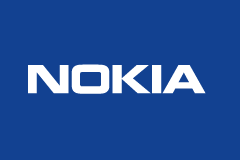Deployment of 5G involves a very different approach to that seen in previous network upgrades. In reality, this isn’t an upgrade but a re-imagining of what a mobile network is and what it can do. Preparing for 5G deployment will therefore be markedly different to earlier cellular generation upgrade preparation. A large part of the difference is because 5G deployment begins with establishing business rather than technical goals.
Where once, network engineers would approach a network upgrade with a set of technological goals in mind, now with 5G mobile operators are looking to deploy the technology where and when there is a clear business case for it to be deployed. 5G preparation therefore begins with understanding what new services will be enabled what types of device – not necessarily human users – will be connected and what latency, coverage and capacity characteristics the new services require.
When these are identified and understood, the business model and the cost of serving each use case can be established. These are questions of economics, not network engineering and business cases needed to be carefully validated to ensure investment is directed in the right way. The days of a build-it-and-they-will-come attitude to network roll-out are over. Now, the focus is use case driven and 5G will be dimensioned and operationalised according to the type and level of demand mobile operators identify in their locations.
Beyond a more in-depth focus on the business case than has been seen before, 5G roll-out and preparation has several additional layers of complexity associated with it. 5G deployment is reliant on a series of business, operational and technical transformations. These must take place as part of a staged process for the fruits of 5G to be realised. Many of the technical transformations are already underway with operators already advanced in their migrations to cloud-based systems and IT.
Further migration will be seen as cloud radio access networks (cloud RANs) are deployed and as intelligence moves out from the data centre to the edge with mobile edge computing. These technologies, coupled with network virtualisation enabled by software defined networks (SDN) and network functions virtualisation (NFV) will enable an automated, self-organising network (SON) for 5G, bringing down the cost base and increasing flexibility.
Not all aspects of 5G will be more challenging. The evolutionary path put in place by standards organisation 3GPP will mean much 5G deployment augments and builds on existing technologies, especially those that use LTE Advanced or other 4.5G technologies. 5G needs to be thought of more as a system than a traditional network and that system involves techniques such as network slicing, site densification and network optimisation to deliver cost savings and spectral efficiencies as well as operational agility.
Nokia has assisted a tier one operator in the APAC region to understand the impact of three selected 5G use cases on its business and network evolution. All network domains – core, RAN and transport – were assessed with the outcome that key architectural changes were identified as necessary to help to define the target 5G architecture. Nokia also made a deep dive into one seven square kilometer geographic area with real network key performance indicators (KPIs) to see how CloudRAN could be introduced to network with the best total cost of ownership (TCO) and performance.
These techniques are new and mobile operators must upskill and familiarise themselves with them as part of their 5G operationalising programmes. These technologies will play a key part in delivering the necessary performance but the good news is that they are mature, established and available in the market place now. Nokia 5G Acceleration Services are focused to address the 5G challenge to help CSPs define their tailored journeys to 5G.
 Learn more by watching our recent webinar with VanillaPlus and Analysys Mason and at http://www.diveinto5g.com/
Learn more by watching our recent webinar with VanillaPlus and Analysys Mason and at http://www.diveinto5g.com/
This blog was written by Helmut Schober, who leads the 5G Services programme at Nokia, and Vikas Dhingra, a consultant at Bell Labs Consulting, now part of Nokia.






